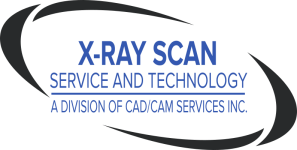X-Ray Film Scanners and Digitizers, X-Ray Film Scanning Services and Software
Digitizing Dental X-Rays and Going Digital
posted Oct-15-2014Digitizing Dental X-Rays and Going Digital
While most dental practices in larger cities made the transition from film to digital X-rays over the past decade, some statistics say that there may be as many as 50% of all dentists who are still not using digital systems. Because digital dental radiographs (digital X-rays) are known to better detect, diagnose, treat, and monitor oral conditions and diseases, most dentists are interested in moving into the digital world.
 The Advantages of Going Digital
The Advantages of Going Digital
Digital radiographs detect more, including small hidden areas of decay between teeth or below existing fillings, bone infections, gum disease, abscesses or cysts, developmental abnormalities and tumors that cannot be detected with only a visual dental examination.
Digital radiographs can be viewed instantly on any computer screen, manipulated to enhance contrast and detail, and transmitted electronically to specialists without quality loss.
Digital radiographs require less storage space than x-ray film.
Dental digital radiographs eliminate chemical processing and disposal of hazardous wastes.
Digital radiographs can be transferred easily to other dentists with compatible computer technology, or photo printed for dentists without compatible al .
Digital radiographs require 50 to 80 percent less radiation than film.
Digital radiographs can be manipulated to increase contrast, sharpness, zoom, etc., to assist in detection, interpretation and patient education by viewing on a screen next to the patient’s chair.
Digital dental images can be stored easily in electronic patient records and, sent quickly electronically to insurance companies, referring dentists or consultants, often eliminating or reducing treatment disruption and leading to faster dental insurance reimbursements.
How to Acquire Digital Images
Digital dental images can be acquired by three methods:
(1) The direct method uses specialized equipment to “take” digital X-rays.
(2) The indirect technique uses an X-ray film scanner to view traditional dental X-rays as digital images.
(3) The semi-indirect digital technique combines scanning and converting dental X-rays into digital images.
Most likely if you plan to “go digital” you will use a combination of all three methods, at least initially.
Purchasing the digital radiograph equipment required to directly take digital X-rays of your patients when they sit in your chair can be expensive, ranging from a conservative estimate of $15,000 to $50,000 for a single system, not including maintenance and service repairs. Most practices have more than one system, and there also is a cost associated with personnel hours to convert old records to digital.
Save by Outsourcing
While paper scanning is an office task and can be done with general office equipment, any type of medical film digitizing, including dental film, is an imaging procedure governed by medical and industry regulations. Therefore, dental film digitizing requires specialized equipment that meets the regulations imposed by the FDA. Particular attention must be paid to accurately and reliably scanning the details in medical and dental films because a medical opinion and/or treatment decision will be made about patient care based on these scanned images. When making a diagnosis from an x-ray, image quality is everything.
This means that one of the most important considerations for successful X-Ray film digitization is the ability to capture a clear image, which, in turn, means having a top-notch Dental Film Scanner, and the knowledge to ensure that the image is scanned correctly. A firm that specializes in X-Ray Film digitizing and records scanning will have the right kind of equipment and the right kind of knowledge to do the job quickly and affordably, saving you hours of in-house time and frustration.
Another thing to consider is the disposal of the film once it’s been digitized. You can’t just throw the film away. There are privacy issues as well as EPA regulations regarding proper disposal of X-ray film. This is another reason for using an outsource firm. Rest assured that if they’re a reliable x-ray scanning firm, they have an appropriate way to dispose of the film.
Bottom Line
Taking your dental office digital takes money, time and a good plan. An outsource service that specializes in medical and dental X-ray and records scanning can save you many hours of personnel time and help to make your transition to digital much smoother. For dental practices, no asset is more important or valuable than their patient records. It is imperative for you to ensure that when you entrust this data to an outside scanning service, it remains safe and secure at all times. There are privacy and HIPAA regulations to which the scanning service bureau must adhere. Therefore, you must do your due diligence, ask the right questions and get the assurance the scanning company that your patient records will be safe and that your patient’s privacy will be ensured.

